Why Do Chameleons Change Color?
There is a creature in nature that is amazing for its unique color-changing ability, that is the chameleon. This reptile that lives in tropical rainforests, grasslands, and other warm areas can blend into the background for camouflage and convey information with its magical color-changing function. It can be called a master of color given by nature. So, how do chameleons perform this "invisibility"? This article will take you to an in-depth understanding of the scientific principles of chameleon color change.
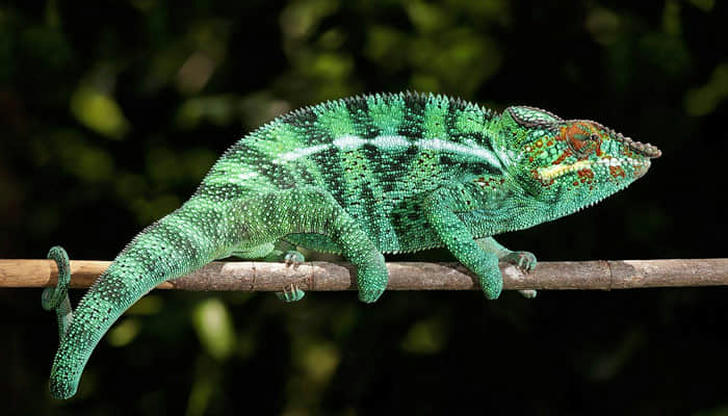
The Physiological Structure of Chameleons
Chameleons are reptiles with unique color-changing abilities. They are mainly distributed in the African continent, especially in Madagascar, which has extremely rich species diversity. Their most well-known feature is that they can quickly and significantly change the color of their skin to adapt to the environment, regulate body temperature, express emotions, or serve as communication signals.
The secret of chameleon color change lies in the highly complex physiological structure and pigment system in their skin. The skin is not a single-layer structure but is composed of multiple layers of cells, including melanocytes, iridophores, pigment cells, and nerve cells. Each layer has its specific function. These cells work together to allow chameleons to change color.
• Melanocytes: Melanocytes are responsible for producing melanin, which is the main determinant of chameleon skin color. There are two types of melanin: eumelanin and pheomelanin. Eumelanin gives the skin a black color, while pheomelanin gives the skin a brown or red color.
• Iridocytes: Iridocytes are responsible for producing yellow, green, and blue colors. These cells contain pigments called "iridophores" that can produce different colors by changing the reflection of light.
• Chromocytes: Chromocytes are responsible for producing colors such as orange, red, and pink. These cells contain pigments called "carotenoids" that can produce different colors by changing the concentration of the pigment.
• Nerve cells: Nerve cells regulate the activity of melanocytes, iridocytes, and chromatophores. When chameleons are stimulated externally, nerve cells send signals that change the activity of various pigment cells in the skin, resulting in different colors.
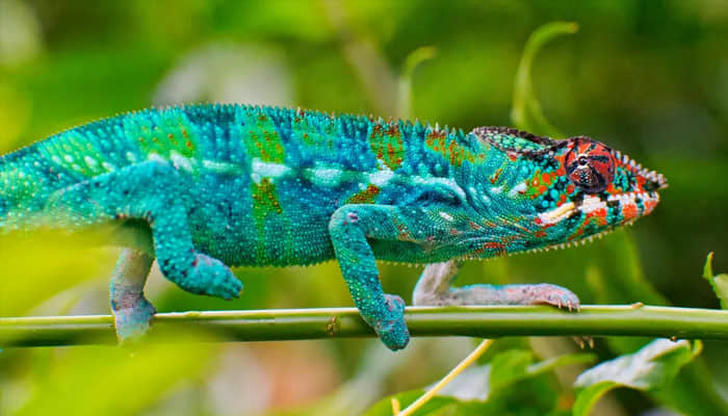
Chameleon's Color-Changing Mechanism
The color-changing mechanism of chameleons mainly depends on the response of their nervous system to environmental stimuli. When a chameleon senses changes in its surroundings, such as light, temperature, humidity, and external stimuli, its nervous system sends signals that cause various pigment cells in the skin to change, thereby changing color.
Specifically, when a chameleon is in an environment of different colors, its nervous system detects the color of the surrounding environment and adjusts the activities of various pigment cells in the skin accordingly. For example, when a chameleon is in a green environment, the nervous system sends signals to cause the iridocytes and pigment cells in the skin to produce more green pigment, so that the chameleon matches the color of the environment.
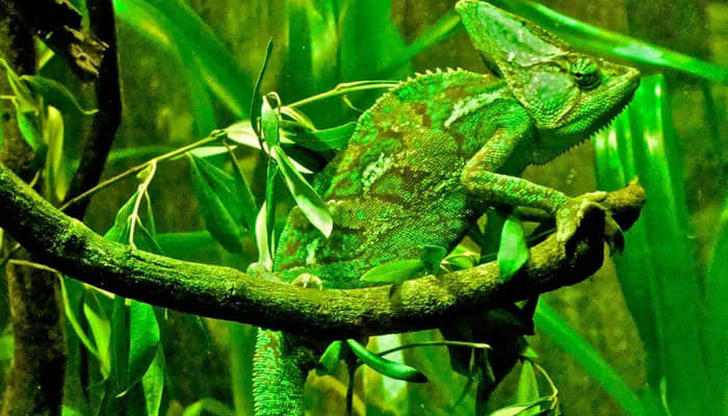
The Significance of Color Change in Biology And the Environment
Color change has multiple meanings in biology and the environment. For chameleons themselves, color change is an important self-protection mechanism that helps them survive better in the natural environment.
• Camouflage: Chameleons change their colors to match their surroundings, thereby avoiding the risk of being discovered by predators. This camouflage is also very useful when chameleons hunt because they can approach prey with the protection of the environment, thereby increasing the success rate of hunting.
• Communication: Chameleons can use color changes to convey information and communicate with other chameleons. For example, when chameleons feel threatened, they become brightly colored to warn other chameleons. During the breeding season, chameleons also change color to attract the opposite sex.
• Regulating body temperature: Chameleons can regulate body temperature by changing color. For example, in a cold environment, chameleons can darken their body color to absorb more sunlight heat and maintain body temperature; in a hot environment, chameleons can lighten their body color to reflect more sunlight heat and lower body temperature.
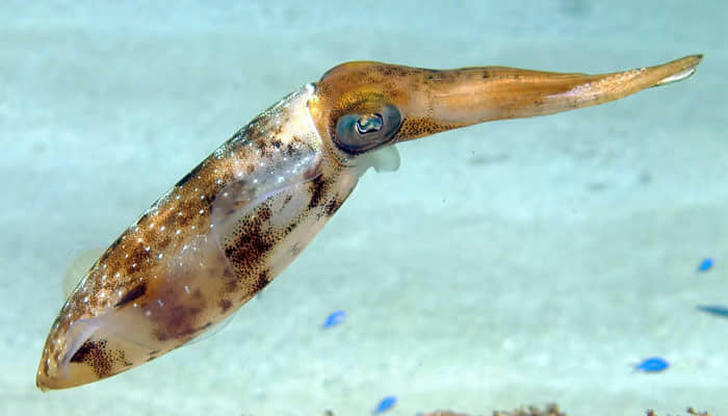
What Other Animals Can Change Color
In addition to chameleons, there are many animals in nature that have the ability to change color. Here are a few typical examples:
• Octopus and squid: These cephalopods are very famous color changers. The combination of pigment cells on their skin and transparent cells that can change shape (chromatophores, iridophores, leucophores, and melanophores) allows them to instantly blend into the surrounding environment and achieve excellent camouflage.
• Anoplogaster cornuta: This is a deep-sea fish that has glow-in-the-dark skin and can change color to match its surroundings or for visual communication.
• Kapuas mud snake: As mentioned above, although not all snakes can change color, some species, especially those that live in specific environments, such as the Kapuas mud snake, can change their skin color to adapt to their environment or as a means of defense.
• Ptarmigan (Lagopus mutus): Although it does not change color as quickly as chameleons, ptarmigan can change the color of its feathers through seasonal molting to adapt to different backgrounds between winter snow and summer jungle.
• Arctic frog (Pseudacris crucifer) and some frogs: Some frogs can change their body color according to environmental conditions and emotional state, especially during the spring breeding period, when male frogs often become more colorful.
• Color-changing spiders (such as some species of crab spiders): Some spiders can also change their body color according to the environment, mainly to hide from hunting or avoid predators.
• Geckos and lizards: Many lizards and geckos, such as the chameleon tree lizard, can change their skin color in response to changes in environment, mood, or body temperature, although the degree and speed may not be as good as that of chameleons.
The principles of color change in these animals vary, some rely on the expansion and contraction of pigment cells in the skin, and some rely on bioluminescence or structural color, but all reflect the high adaptability evolved by the biological world in order to survive and reproduce.
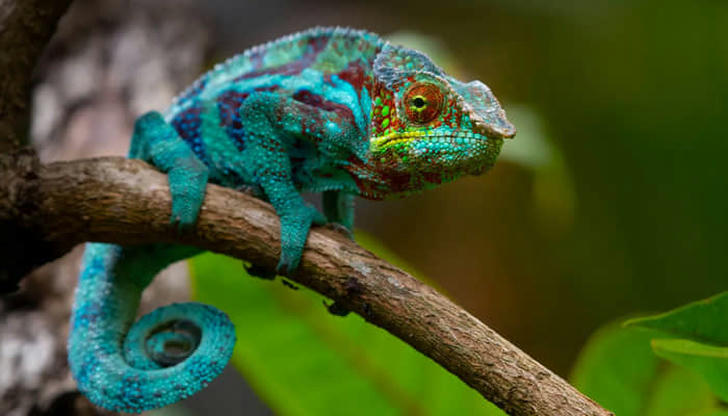
In summary, the reason why chameleons change color is due to their unique physiological structure and nervous system. Color change has important significance in biology and the environment, and helps chameleons survive and reproduce better in the natural environment. Understanding the color change mechanism of chameleons not only helps us better understand this strange reptile but also provides useful inspiration for scientists to study animal protective color and communication.
